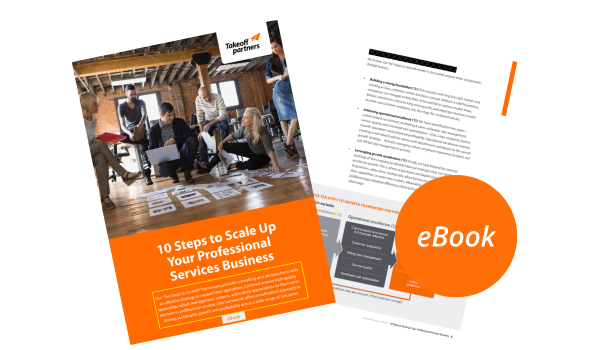Growing into a global thought leader: How to?

Taking a company global is challenging enough, and positioning it as a thought leader while doing so sets the bar higher still. In this article we discuss thought leadership, and why we would advise an internationalizing company to aim for it. ‘Positioning’ is the fourth success factor out of five in our Takeoff Success Factors framework.
1) Getting started: Understanding the playing field
‘Positioning’ by definition means taking a position in relation to someone else. This is the reason we are not referring directly to ‘marketing’ or ‘brand building’: To position oneself, one must first understand where the other players stand: Who are the potential customers and what are their needs? What does the competitive situation look like? What are the target market characteristics and how do they differ from each other?
Typical ways to gather insights on the industry are to search online, interview experts and potential customers, and visit industry events. This research exercise should result in a clear picture of the customer demand and the competitive playing field – and an idea of the position that the company should be able to claim in the marketplace.
2) Getting ready: Developing an own voice
A thought leading company is one that customers and interest groups want to follow because the company genuinely adds value to them. The best way to ensure this is to be unique: Provide something that others (in particular the competitors) do not. Achieve this, and over time you will most likely be able to price higher than the competition.
The company’s own voice will be developed based on best practices discovered while working with the first customers. The first successful experiences will prove the concept, and this proof should be used in starting to market the company, i.e. starting to go after the desired market position.
3) International market entry: Taking marketing seriously
Now the company has a good idea of its international customers and competition, a positioning plan, and the first successful customer cases to build on. It’s time to enter the targeted new markets, and marketing needs to be resourced accordingly. In other words marketing needs to be built into a professional program with a leader that truly understands the heart of the business, a brand and marketing strategy, KPIs to measure success with, and resources to perform the tasks defined in the strategy.
Surprisingly many companies underestimate the amount and quality of planning and resourcing that needs to go into marketing in order for the company to reach the ambitious goal of thought leadership. Yet through community building and smart marketing the company should rather quickly be able to have its happy customers ‘sell to each other’, which in turn accelerates growth in sales.
4) International growth facilitation: Leveraging thought leadership
At this stage the company has proven its worth
in the global marketplace and has earned a thought leader’s brand position
through sharing best practices and educating the market. Marketing continues to
be a professional program that produces regular deliverables and continuously
seeks fresh perspectives for the customers and interest groups to benefit from.
5) Running a global business: Nurturing the global followership
A thought leader’s market position is not
easily obtained but once the company has such status, its brand does have a certain
tendency to stick. With a globally recognized and respected brand, the greatest
risk is the lack of renewal, however, and to stay as a leader the company has
to continually lend a keen ear to its customer community.
Also, coming back to where the entire positioning exercise started, the company should never forget watching the emerging trends and competition in the industry. Thought leading frontrunners will only stay as that if they remember to always think ahead – and share that thinking proactively among their community. Naturally this thinking also needs to be reflected in the continuous development of the company’s products and services.
Next up: Traction - Winning trust that translates into numbers
Subscribe to our thinking on LinkedIn, Twitter
and Facebook to stay tuned!
About the Takeoff
Success Factors™ framework
The Takeoff Success
Factors™ framework is a summary of best practices in
internationalizing B2B software and service businesses. It grows from the
combined experience of the Takeoff Partners team in taking businesses global. The
proprietary framework is a unique checklist for entrepreneurs to help plan for
their company’s internationalization from ‘flight preparations’ all the way to
reaching the ‘cruising altitude’.






